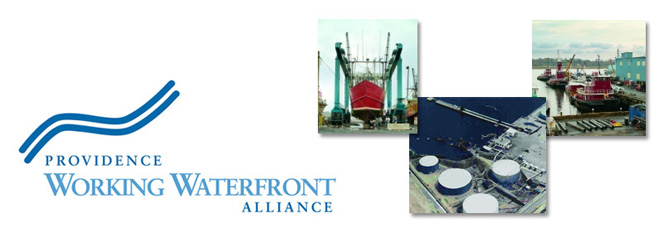Projo.com has an excellent “R.I.’s future maritime jobs” piece by marine experts Peter Michaelson William Coffey, and George Shuster Jr. The article notes the tremendous potential for marine industrial growth in Rhode Island, including at the Port of Providence, which the authors argue must be protected from incompatible uses:
The Port of Providence is an example of an intermodal facility already in service for many years. It stands as the best example of commercial/industrial port activity in the state. Adjoining businesses include ProMet Marine, one of the two remaining active, full-service commercial shipyards in Rhode Island (the other is the Blount Shipyard, in Warren). ProMet serves the shipping and fishing industries with high-tonnage facilities for repair and maintenance of vessels. A number of other port-dependent businesses also adjoin the facility, including tanker off-loading docks, fuel-tank farms and truck distribution facilities, a tug and barge base, and others.
However, expansion of maritime industry at the Port of Providence is limited by a number of factors.
First, although acreage available is adequate for present tenants and enterprises and space remains for a limited amount of further development, intensive development will be limited by available space.
Second, while the happy coincidence of a complex shoreline to the south of the Port has enabled development of the former Fields Point shipyard as a Johnson & Wales University center, together with the new Save the Bay education and research center, this juxtaposition of uses will not work as easily to the north or directly to the west of the Port. Non-industrial redevelopment of Conley’s Wharf and adjacent property is thus not appropriate; another use for that site should be sought. Appropriate uses might include fabrication of wind turbines, or development of a cruise-ship terminal.
Future development of the Port of Providence, together with the proposed “Knowledge District,” badly needs a buffer zone between them. One desirable way to integrate a buffer zone with current proposals would be to establish a green strip where light rail cars would connect the port, knowledge sector enterprises, human services and residential areas of the city.

